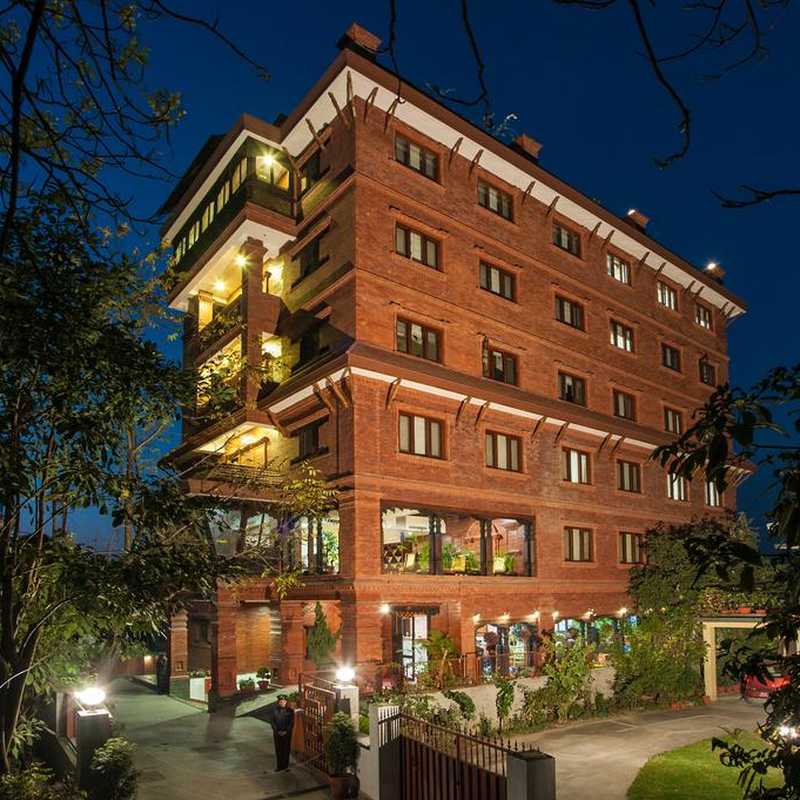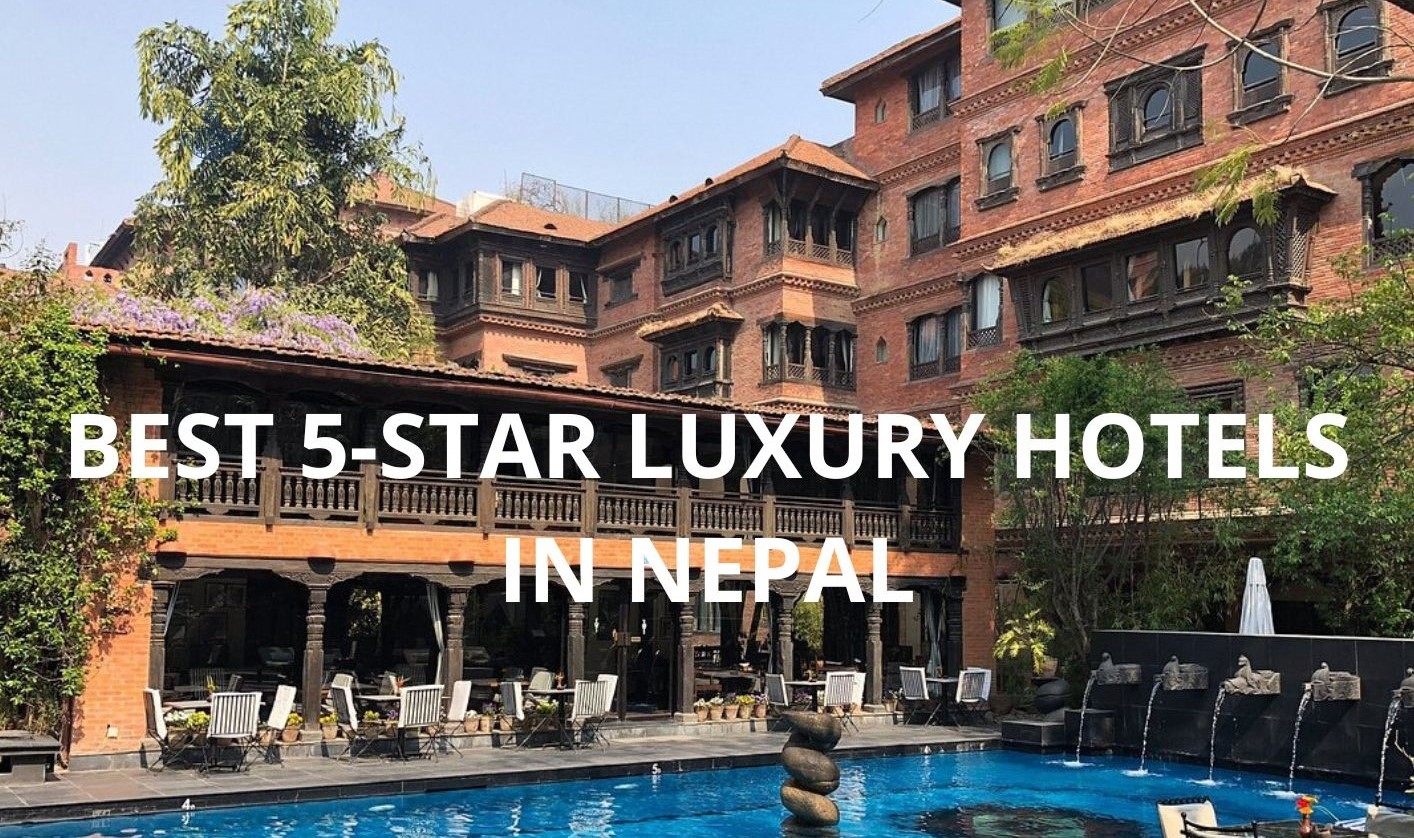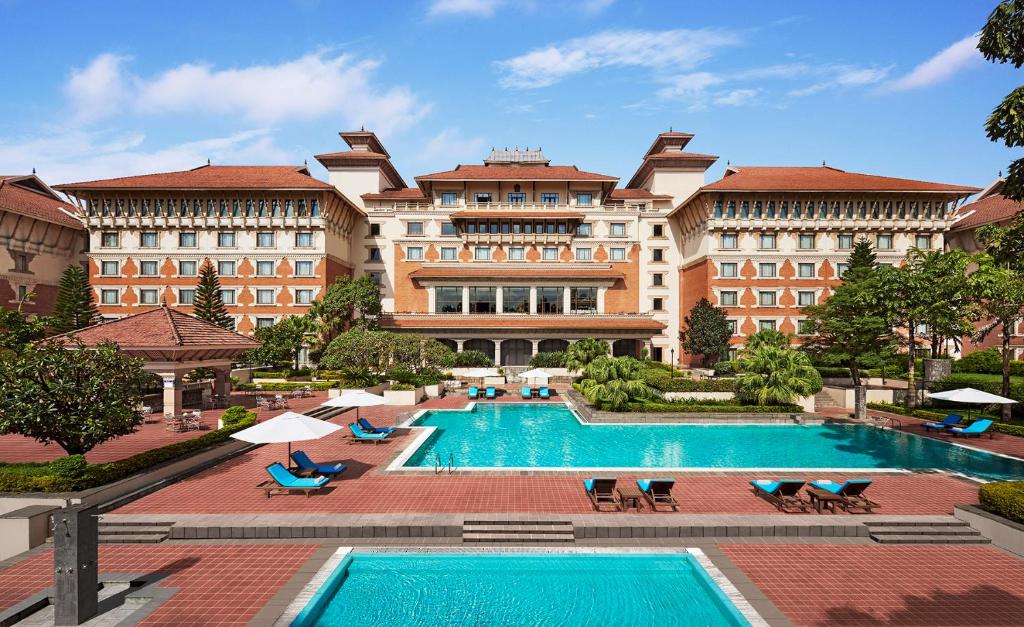
Nepal, a landlocked country nestled in the heart of the Himalayas, is a sensory overload of majestic mountains, ancient temples, vibrant culture, and warm hospitality. From the bustling streets of Kathmandu to the serene landscapes of Pokhara and the rugged trails of the Everest region, Nepal offers an experience unlike any other. This article will guide you through the best of Nepal, exploring its top attractions, rich history, practical travel tips, diverse accommodation options, transportation nuances, and the ideal time to plan your adventure, ultimately leading you to the best hotels for an unforgettable stay.
Nepal’s Top Attractions: A Tapestry of Nature and Culture
Nepal’s allure lies in its diverse landscapes and rich cultural heritage. Here are some must-see attractions:

Related Articles about Unveiling Nepal: A Journey Through History, Culture, and the Best Hotels in the Land of the Himalayas:
- Beyond the Glitz: Exploring the Wonders of the United Arab Emirates
- The Grand American Adventure: Unlocking the Wonders of the United States
- Unveiling the Rainbow Nation: A Comprehensive Guide to South Africa
- Yogyakarta: The Soul of Java – A Complete Guide
- Iceland: A Land of Fire and Ice – Your Ultimate Guide to Adventure
-
Kathmandu Valley: The heart of Nepal, the Kathmandu Valley is a UNESCO World Heritage Site brimming with ancient temples, palaces, and bustling markets.
- Kathmandu Durbar Square: Witness the grandeur of the Malla and Shah dynasties with its intricate architecture and historical significance.
- Pashupatinath Temple: One of the most sacred Hindu temples in the world, dedicated to Lord Shiva, located on the banks of the Bagmati River.
- Swayambhunath Stupa (Monkey Temple): A hilltop stupa offering panoramic views of Kathmandu, adorned with colorful prayer flags and playful monkeys.
- Boudhanath Stupa: One of the largest spherical stupas in Nepal, a significant pilgrimage site for Tibetan Buddhists.
- Bhaktapur Durbar Square: A well-preserved medieval city showcasing traditional Newari architecture and craftsmanship.

-
Pokhara: A serene lakeside city known for its stunning views of the Annapurna and Dhaulagiri mountain ranges.
- Phewa Lake: Enjoy boating, kayaking, or simply relax by the tranquil waters of Phewa Lake, reflecting the snow-capped peaks.
- World Peace Pagoda: A hilltop pagoda offering breathtaking views of the Annapurna range and the surrounding valley.
- Sarangkot: A popular spot for paragliding and sunrise views over the Himalayas.
- Devi’s Fall: A unique waterfall that disappears into an underground cave.
-
Chitwan National Park: A UNESCO World Heritage Site and one of the best places in Asia to spot wildlife.
- Jungle Safari: Explore the park on elephant back or jeep safari to encounter rhinoceros, tigers, crocodiles, and diverse bird species.
- Tharu Cultural Show: Experience the vibrant culture of the Tharu people with traditional dances and music.
-
Lumbini: The birthplace of Lord Buddha, a UNESCO World Heritage Site and a significant pilgrimage destination for Buddhists worldwide.
- Maya Devi Temple: The temple marking the exact birthplace of Buddha.
- Ashoka Pillar: An ancient pillar erected by Emperor Ashoka to commemorate his visit to Lumbini.
- Monastery Zone: Explore various monasteries built by different Buddhist countries, each reflecting unique architectural styles.
-
Everest Region: The ultimate destination for adventure seekers, offering breathtaking views of the world’s highest peak.
- Everest Base Camp Trek: A challenging but rewarding trek leading to the base of Mount Everest.
- Kala Patthar: A popular viewpoint offering panoramic views of Everest and surrounding peaks.
- Tengboche Monastery: The largest monastery in the Khumbu region, offering stunning views of Ama Dablam.
A Glimpse into Nepal’s History:
Nepal’s history is a captivating blend of ancient kingdoms, cultural exchanges, and resilience in the face of challenges. The Kathmandu Valley served as the epicenter of power for centuries, with dynasties like the Lichhavis and the Mallas leaving behind a legacy of art, architecture, and religious traditions. The unification of Nepal in the 18th century under King Prithvi Narayan Shah marked the beginning of the Shah dynasty, which ruled until the abolition of the monarchy in 2008. Nepal’s history is intertwined with Buddhism and Hinduism, resulting in a unique syncretic culture reflected in its temples, festivals, and social customs.
Essential Travel Tips for a Smooth Journey:
- Visa: Most nationalities can obtain a visa on arrival at Tribhuvan International Airport in Kathmandu or at land borders.
- Currency: The Nepalese Rupee (NPR) is the local currency. ATMs are available in major cities, but it’s advisable to carry cash, especially in rural areas.
- Language: Nepali is the official language, but English is widely spoken in tourist areas.
- Health: Consult your doctor regarding necessary vaccinations and medications. Drink bottled water and be mindful of food hygiene.
- Altitude: If trekking at high altitudes, acclimatize gradually to avoid altitude sickness.
- Respect Local Customs: Dress modestly when visiting religious sites and be mindful of local traditions.
- Bargaining: Bargaining is common in markets and tourist shops.
- Stay Connected: Purchase a local SIM card for affordable data and communication.
Accommodation Options: From Budget-Friendly to Luxurious Retreats
Nepal offers a wide range of accommodation options to suit every budget and preference:
- Guesthouses: Simple and affordable options, especially popular among budget travelers and trekkers.
- Boutique Hotels: Offering unique character and personalized service, often located in historic buildings or scenic locations.
- Luxury Hotels: Providing world-class amenities, stunning views, and exceptional service, catering to discerning travelers.
- Tea Houses: Basic accommodation along trekking routes, offering a place to sleep and eat.
- Homestays: An opportunity to experience local culture firsthand by staying with a Nepali family.
Transportation: Navigating the Diverse Terrain
Getting around Nepal can be an adventure in itself. Here are the main transportation options:
- Flights: The most convenient way to travel between major cities like Kathmandu, Pokhara, and Lukla.
- Buses: A common and affordable mode of transportation, connecting cities and towns across the country. Tourist buses offer more comfortable seating and amenities.
- Taxis: Readily available in cities, but be sure to negotiate the fare beforehand.
- Rental Cars: Not recommended for self-driving due to challenging road conditions.
- Motorbikes: A popular option for exploring cities and surrounding areas, but exercise caution and wear a helmet.
- Trekking: The primary mode of transportation in mountainous regions, allowing you to immerse yourself in the stunning landscapes.
The Best Time to Visit: Seasons and Festivities
The best time to visit Nepal depends on your interests and activities:
- Autumn (September – November): Considered the peak season, offering clear skies, pleasant temperatures, and ideal conditions for trekking.
- Spring (March – May): Another popular season with blooming rhododendrons, moderate temperatures, and good visibility.
- Winter (December – February): Cold temperatures, especially in the mountains, but offers clear views and fewer crowds.
- Summer (June – August): Monsoon season with heavy rainfall, making trekking difficult, but the valleys are lush and green.
The Best Hotels in Nepal: A Curated Selection
Here’s a selection of some of the best hotels in Nepal, catering to various budgets and preferences:
-
Kathmandu:
- Dwarika’s Hotel: A heritage hotel showcasing traditional Newari architecture and craftsmanship, offering a luxurious and culturally immersive experience.
- Hyatt Regency Kathmandu: A modern luxury hotel with spacious rooms, multiple dining options, and a tranquil spa.
- Hotel Yak & Yeti: A historic hotel with a blend of traditional and contemporary design, offering a central location and excellent amenities.
- Thamel Eco Resort: A budget-friendly option in the heart of Thamel, offering comfortable rooms and a peaceful atmosphere.
- Hotel Jampa: A good mid-range option with clean rooms and friendly service, close to the main attractions.
-
Pokhara:
- The Pavilions Himalayas: An eco-friendly luxury resort nestled in the foothills of the Himalayas, offering stunning views and sustainable practices.
- Temple Tree Resort & Spa: A boutique hotel with traditional Nepali architecture, offering a peaceful setting and breathtaking views of the Annapurna range.
- Shangri-La Village Resort Pokhara: A sprawling resort with lush gardens, a swimming pool, and stunning views of Phewa Lake and the mountains.
- Hotel Barahi: A lake side option with great views and great service.
- Hotel Lake View Resort: A budget-friendly option with comfortable rooms and a beautiful view of Phewa Lake.
-
Chitwan:
- Tiger Tops Karnali Lodge: An exclusive wildlife lodge offering immersive jungle experiences and luxurious accommodations.
- Kasara Resort: A contemporary resort with stylish villas, a swimming pool, and a range of activities to explore the national park.
- Barahi Jungle Lodge: A luxurious lodge with comfortable cottages, a swimming pool, and guided jungle safaris.
-
Nagarkot:
- Club Himalaya: Offers breathtaking panoramic views of the Himalayas from its hilltop location.
- Hotel Country Villa: A more secluded option, also offering stunning mountain views and a peaceful retreat.
Conclusion: Embark on Your Nepali Adventure
Nepal is a destination that captivates the senses and leaves a lasting impression on the soul. From the towering peaks of the Himalayas to the ancient temples of Kathmandu and the tranquil lakes of Pokhara, Nepal offers a diverse range of experiences for every traveler. By understanding the country’s history, culture, and practical travel tips, you can embark on a smooth and unforgettable journey. Choosing the right accommodation is crucial for a comfortable and enjoyable stay, and the hotels listed above represent some of the best options available in Nepal. So, pack your bags, prepare for adventure, and immerse yourself in the magic of Nepal, a land where the mountains touch the sky and the spirit soars.





